This past weekend, the Caritas Society of St. John’s College Annapolis held a fundraiser promoting Children’s Lit writers from around the area. The Caritas Society, formed in 1969 to raise funds for student book purchases and offer events that provide relationships between St. Johns and the larger community, has long held a Meet the Author event at the school, but the event had taken a three-year hiatus.
This year, the Meet the Author Event returned to the Mitchell Gallery on St. John’s campus. The gallery is currently exhibiting illustrations celebrating the last 100 years of children’s literature, and because of this, Caritas chose to invite three talented and well-respected writers of children’s books to share stories of their lives and how they broke into writing for children. While these writers seem to have very similar jobs, their stories could not be more different.
Susan Weisberg – Chester Midshipmouse
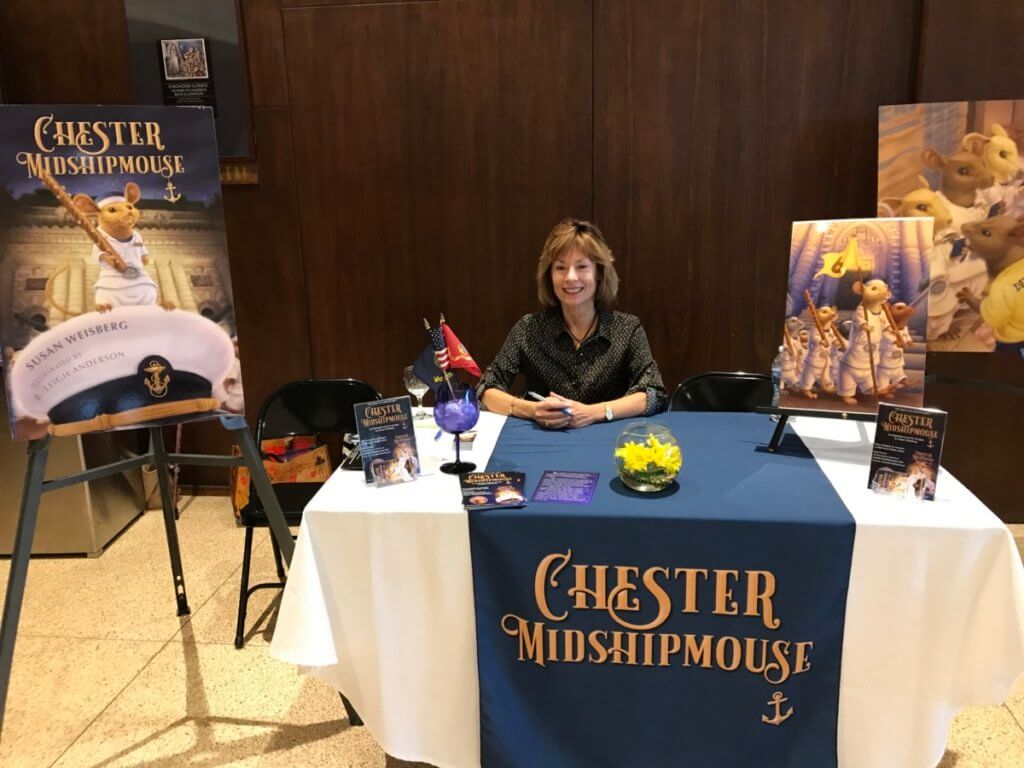
Susan Weisberg, ready to sign copies of ‘Chester Midshipmouse.’
Susan Weisberg began her life as an ER nurse, and worked on the side as a sous chef, a food stylist and a food writer. She had dreams of writing a book, and always assumed her book would be about food. When the middle of her three sons expressed an interest in attending the Naval Academy, however, her writing plans took a different turn.
Two of Weisberg’s sons were ultimately accepted to the Academy, and it was during this journey where Weisberg was first introduced to what may have been Chester’s ancestors. Parents of Academy students began receiving letters asking them to ensure that any food sent to their children be in airtight containers. You see, Bancroft Hall – the student dormitory – had a mouse problem.
The very specific world of the Naval Academy, as well as the influx of a family of mice that made their home there, gave Weisberg the inspiration for Chester the Midshipmouse and his dreams of being in the Navy. Weisberg believes that writing fiction is about “world-building,” and seeing how the Naval Academy runs up close provided her a way to build Chester’s world from the ground up. In the first of what she hopes to be a series, Chester is working to be accepted into the Naval Mouse Academy, while learning more about the midshipmen that live in Bancroft Hall. This new mouse world led to a book that is, in Weisberg’s words, “Stuart Little meets Band of Brothers.”
When it came time to illustrate the book, she had a specific idea of how she wanted her mice to look. She wanted realistic looking mice and backgrounds that captured the very real beauty of the Academy. During her research, she found one artist who worked in a style she liked. Serendipitously, that artist – R. Leigh Anderson – was represented by a firm right here in Annapolis. It was almost too good to be true.
A few years after Weisberg first began her journey, Chester Midshipmouse was published with R. Leigh Anderson’s beautiful illustrations. While promoting the book, she enjoyed learning the stories of her readers: At one event she met a little girl very excited about Chester, because she had much the same idea, naming her mouse Chesapeake. Both writers decided that great minds must think alike.
Weisberg’s writing career has also affected her family. In another outbreak of mice in Bancroft Hall, her son accidentally took a mouse to class with him in his book bag. In a quick call home to his mom, he told her, “I think I took Chester to class with me today, and thanks to your book I couldn’t kill him!”
While writing about the Navy and a very determined mouse may not have initially been on the radar for Susan Weisberg, a mixture of serendipity and her own life experience helped to create a very fun book for readers of all ages.
Tami Lewis Brown – Soar, Elinor!
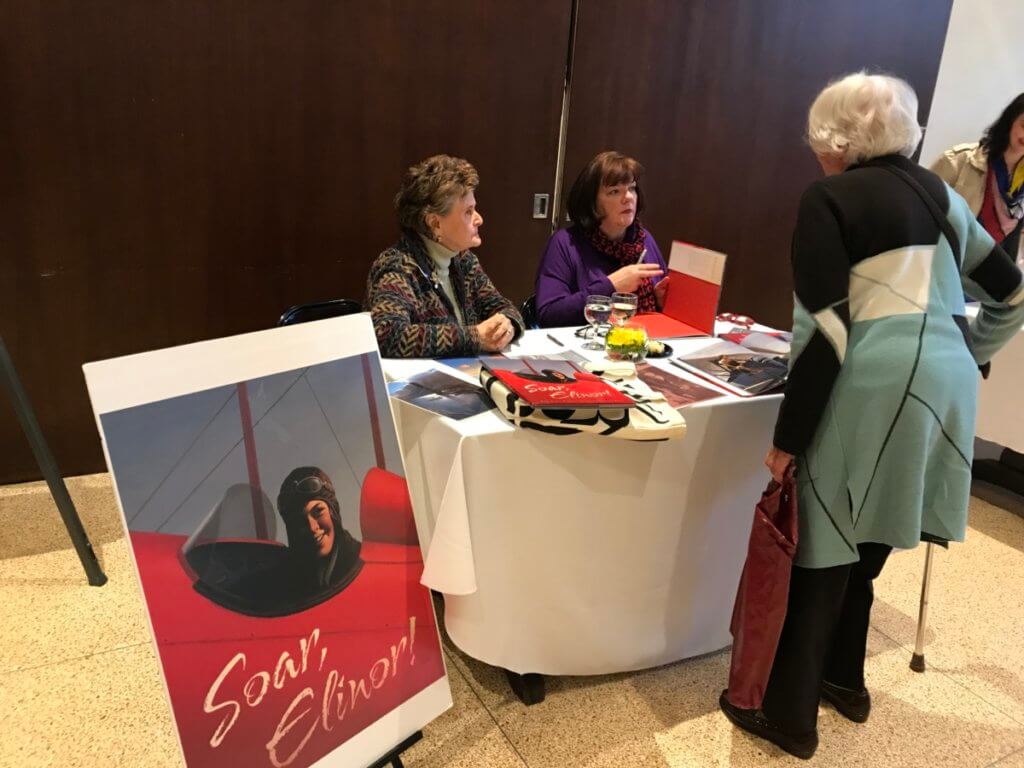
Tami Lewis Brown signing copies of ‘Soar, Elinor!’
Next up was another writer who took a bit of a detour from her original dreams. Tami Lewis Brown was a lawyer who flew planes on the side, and it was her love of flying that led her to publish her first children’s book Soar, Elinor!
While reading stories to her young son, Lewis Brown realized she was living in a golden age of children’s literature. The stories inspired her to take classes at The Writer’s Center in Bethesda, Md, and later attend a conference for the Society of Children’s Book Writers and Publishers. It was there that she learned of the MFA in Children’s Literature. She chose to go to Vermont and pursue the degree.
While in Vermont, Lewis Brown wrote stories for young adults, but she had trouble nailing down exactly what type of book she wanted to write. She ultimately decided that to write truthfully, she’d need to “write what was deep inside of her.” She determined her interests revolved around learning about women who achieved more than they should have in life, as well as her love of flying.
Elinor Smith checked both boxes. Not only was Elinor an accomplished pilot, but she was also the first female pilot in the world, and completed stunts in her career that men had never even attempted. Learning Elinor’s story gave Lewis Brown the inspiration she needed to write the book. Her publisher was also inspired by the story, and encouraged her to find Elinor to ensure that her facts were straight, and get the pilot’s approval to tell her story.
Elinor was 97 at the time, and through a course of unanticipated events, Lewis Brown was able to track the famed pilot down and meet with her. Elinor was a spitfire even at 97, Lewis Brown said, and she shared stories of her life in the pilot’s seat complete with details that would help the illustrator and the writer tell her story. Most pictures of Elinor and her plane are in black and white. Meeting Elinor allowed Lewis Brown to gain details and picture the story in color for the first time.
The illustrator – Francois Roca – lived in Paris and was chosen by the publisher to illustrate Elinor’s story. Lewis Brown sent him stacks of pictures to make the details as specific as possible, which helped Roca to create a realistic depiction of Elinor’s world at the time. Lewis Brown even conducted field research that led her to finding Elinor’s Waco 30 plane in a hangar in Rhinebeck, NY. She knew that it was Elinor’s plane by matching the tail number that Elinor had provided in their meeting.
Soar, Elinor! is the story of a woman who embarked on all sorts of adventures that she wasn’t really supposed to, and lived to tell the tale. It’s because of this that Tami Lewis Brown has a calendar on her website that includes “365 Fabulous Female Flying Facts,” one for each day of the year, to share the stories of other young women who flew higher than they should have and inspire other women to do the same.
Sean Rubin – Bolivar
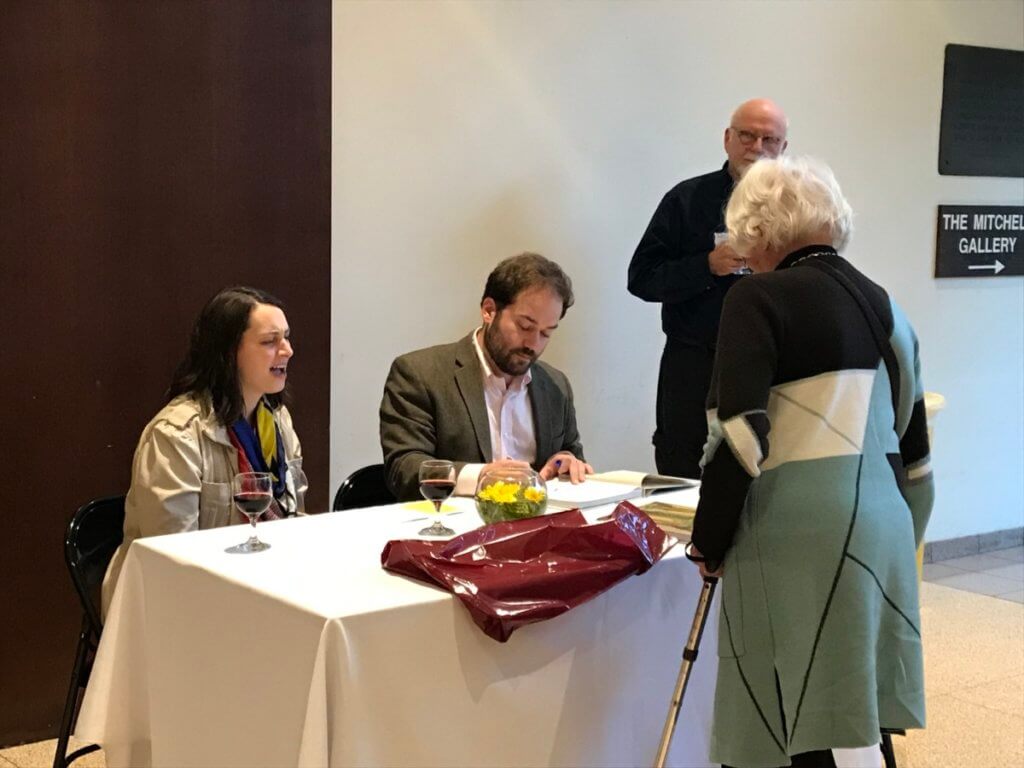
Sean Rubin signing copies of ‘Bolivar.’
Sean Rubin’s path to writing and illustrating was much more straight-forward than the two previous speakers. Rubin attended Princeton, where he majored in art and archaeology, and met his wife Lucy. Bolivar is the first book that Rubin wrote and illustrated, and it tells the story of Bolivar, a dinosaur who lives in New York City because “he doesn’t want anyone to notice him.” Bolivar meets a little girl who wants to tell everyone about him, but no one believes her. Rubin developed the idea for Bolivar from his cousin.
When he and his cousin were teens, Rubin said, they would create art projects using a tiny dinosaur figurine. In one of these “adventures,” as Rubin called them, the dinosaur became Mayor of New York City, though no one in their family seemed to care. He realized that in his head, “the most interesting part of Bolivar was that no one seemed to care about his adventures.” The story began its life as a picture book, but at 1200 words, publishers believed it was too long. So Rubin decided to make it longer. He expanded the dialogue and added more characters to the story. By the time it was complete, Bolivar was a five-chapter book weighing in at 224 pages.
Rubin created all of the illustrations in the book, with graphics that range from full-page spreads to comic book sides. Between both writing the story and illustrating it, the book took five years to complete. Rubin, who also illustrates for other authors’ books, found it difficult to illustrate his own, because he kept changing the words to fit his creative whims while illustrating. His publisher told him to “fire the writer,” which helped him to get past this hang up.
Bolivar is a testament to writing what you want to write, because Rubin was told by numerous publishers that “they can’t publish this like it is.” He learned that that only means they haven’t had experience with publishing something like this, not that it’s unreadable or even unsellable. In the end, Bolivar became a beautiful (thanks to his intricate illustrations) and comical story of a dinosaur and a small girl.


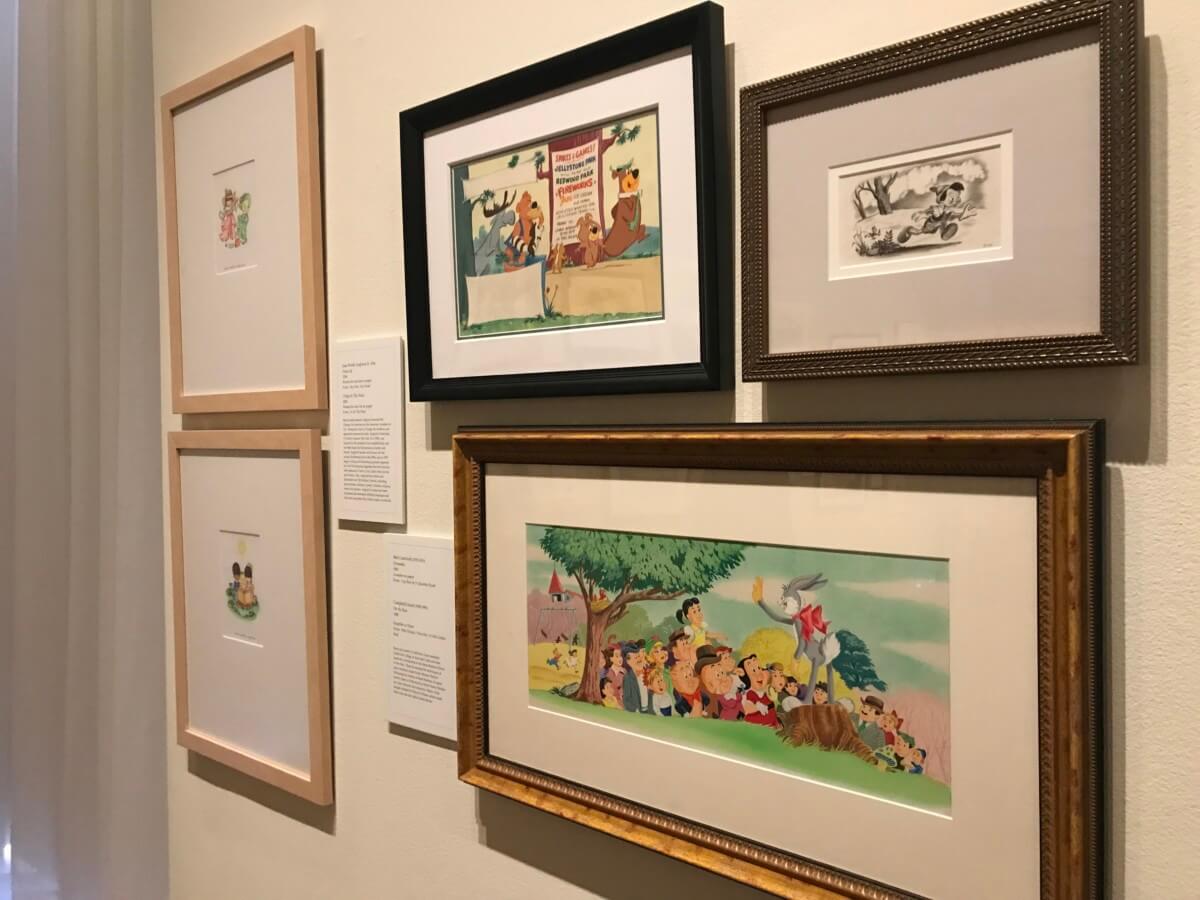


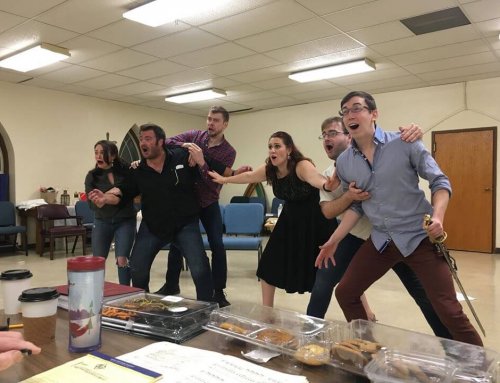
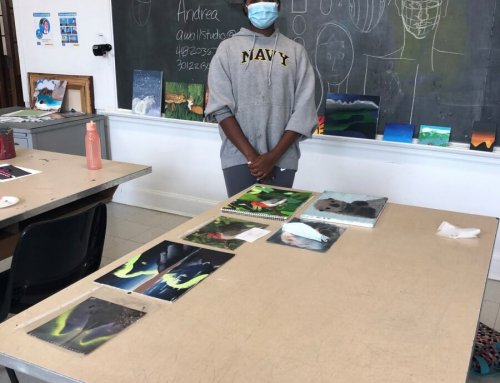

Leave A Comment